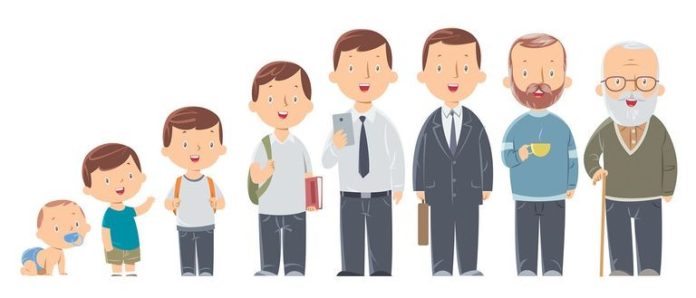Human development is a lifelong process that can be broken down into distinct periods, each with unique physical, cognitive, emotional, and social milestones. These stages help us understand how people grow, change, and adapt over time. The major periods of human development are:
1. Prenatal Period (Conception to Birth)
The prenatal period is the earliest phase, beginning at conception and ending with birth. This stage involves rapid physical growth and development, as the fertilized egg forms into an embryo and then a fetus. The baby’s organs, systems, and body structures begin to take shape, setting the stage for life outside the womb.
2. Infancy (Birth to 2 Years)
Infancy is a time of intense growth and development. Infants rapidly develop motor skills, learn to communicate through crying and eventually speaking, and begin to form emotional bonds with caregivers. Sensory abilities also develop, and infants start to explore their world through sight, touch, and sound. Cognitive abilities grow, laying the foundation for future learning.
3. Early Childhood (2 to 6 Years)
During early childhood, children gain more control over their physical movements and begin to develop language skills. They also start engaging in symbolic play, improving their cognitive abilities. Socially, children learn to interact with others, form friendships, and start understanding basic emotional regulation. Their personalities begin to take shape, influenced by their interactions with family and peers.
4. Middle Childhood (6 to 12 Years)
Middle childhood is a time of increased cognitive abilities and social development. Children in this stage develop logical thinking, learn academic skills like reading and math, and begin to understand concepts of time and cause-and-effect. Socially, peer relationships become more important, and children learn about teamwork, fairness, and moral values. Physical growth slows, but children continue to improve their motor skills.
5. Adolescence (12 to 18 Years)
Adolescence is marked by puberty, which triggers significant physical changes like growth spurts and sexual maturation. Cognitively, adolescents develop the ability to think abstractly, reason hypothetically, and explore their identity. This is also a period of emotional and social changes, as teens strive for independence, form deeper relationships with peers, and explore their values and beliefs.
6. Young Adulthood (18 to 40 Years)
Young adulthood is a period of establishing independence, pursuing career goals, and forming intimate relationships. This stage involves significant life decisions, including career choices, partnerships, and starting families. Physical health is typically at its peak during this period, and cognitive abilities remain strong.
7. Middle Adulthood (40 to 65 Years)
Middle adulthood is a time for reflection and reassessment. People in this stage may experience changes in physical health and energy, and there may be a focus on career progression or transitions. Socially, relationships with children and peers evolve, and individuals may experience “midlife crises” as they reflect on their achievements and future goals.
8. Late Adulthood (65+ Years)
Late adulthood is marked by aging, with physical changes becoming more pronounced. Cognitive decline may occur, though many older adults maintain mental sharpness. Socially, people focus on relationships with family and friends, and many individuals reflect on their lives. Retirement, dealing with health issues, and coping with loss are common themes in this period.
In summary, these stages—prenatal, infancy, early childhood, middle childhood, adolescence, young adulthood, middle adulthood, and late adulthood—represent the key periods of development in human life, each with unique challenges and milestones.
Subscribe on YouTube - NotesWorld
For PDF copy of Solved Assignment
Any University Assignment Solution


.webp)